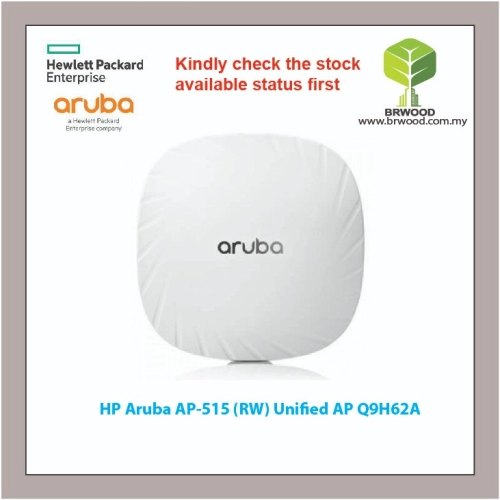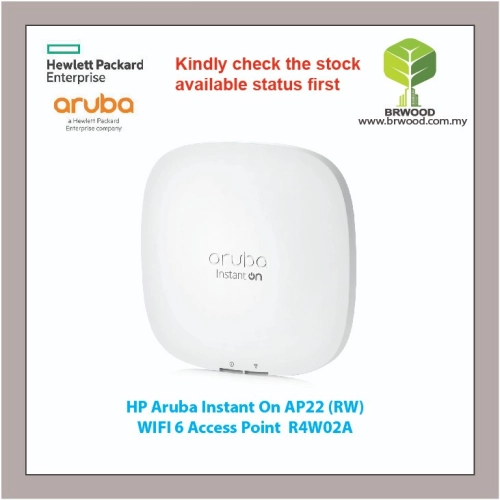HP Aruba JY678A: Aruba AP-303H (RW) Unified Access Point
RM1,370.00
Category: ACCESS POINT
Quantity: In Stock
Specifications
SKU: HP Aruba JY678A
Weight(grams): 470
Dimension: 128 cm (Length) x 63 cm (Width) x 168 cm (Height)
Model: JY678A
HP Aruba AP-303H (RW) Unified Access Point
This access point combines wireless and wired access in a single compact device. It’s ideal for hotels, medical clinics, classrooms, branch offices and remote workstations which often require flexible and easy deployment options.
Three local Gigabit Ethernet ports are available to securely attach wired devices to your network. One of these ports is also capable of supplying PoE power to the attached device.
Integrated Bluetooth Aruba Beacon simplifies the remote management of a large-scale network of battery-powered BLE Aruba Beacons while also providing advanced location and indoor wayfinding, and proximity-based push notification capabilities. Also for improved network simplicity and security, Dynamic Segmentation automatically enforces real-time device-level access policies on Aruba wired and wireless networks.
Key Feature- Combine wireless and wired access in a single, compact device
- Resolve sticky client issues with MU-Ml MO-aware Client Match
- Up to 1.2 Gbps aggregate data rate
- Wall-jack and desk stand mounting options
- Participates in Aruba's Dynamic Segmentation solution
- Aruba limited lifetime warranty
Specifications
| AP-303H ACCESS POINT SPECIFICATIONS |
|---|
|
| WI-FI RADIO SPECIFICATIONS |
|---|
|
| WI-FI ANTENNAS |
|---|
|
| OTHER INTERFACES |
|---|
|
| ENCRYPTED THROUGHPUT |
|---|
|
| POWER SOURCES AND CONSUMPTION |
|---|
|
| RELIABILITY |
|---|
|
| CERTIFICATIONS |
|---|
|



Inquiry - HP Aruba JY678A: Aruba AP-303H (RW) Unified Access Point

 +6010-404 0086
+6010-404 0086 bryan.brwood@gmail.com
bryan.brwood@gmail.com











